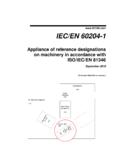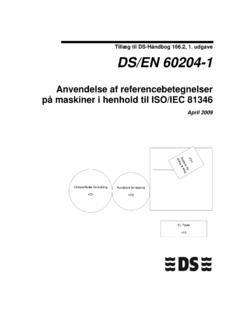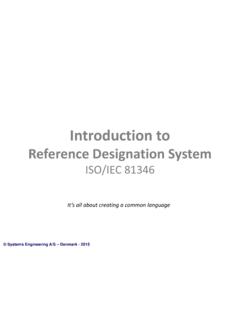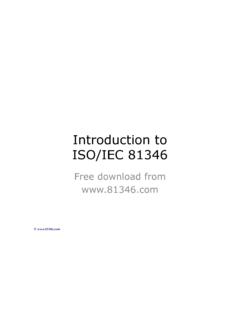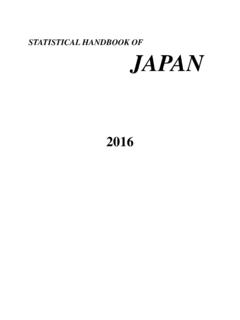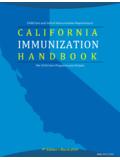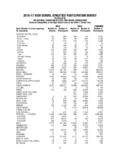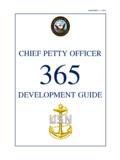Transcription of DS-handbook 166 UK 2016-12-01 - 81346.com
1 a guide to RDS Reference Designation SystemsDS- handbook 166:2017 ISBN 978-87-7193-028-3 ISSN 0903-0484DS- handbook 166:20172ND EDITIONA guide to RDS Reference Designation SystemsTAG Numbers for Systems in Accordance with the ISO/IEC 81346 Standard Series 2003-2017 Danish Standards Foundation and Henrik BalslevContents iContents1 Getting .. Complexity .. 81346 .. and 82 The Engineering and 81346 .. of the 81346 Standard Reference Designation Reference Designation of Relations .. in Part-of Relations .. Designation and Other TAG s .. is an Object?.. Occurrence and Individual .. Object Life in an Aspect .. 314 The Fundamental .. Structure Characteristics .. Creating Clarity: 81346 Part 1 .. to Aspects .. Function Aspect (=).. Product Aspect (-).. Location Aspect (+).. Type Aspect (%) .. Codes and Numbers .. Rule .. 535 Letter Letters in a Reference Designation.
2 In 81346-2 Edition 2017 .. Letter Codes to a System Entry Class 1stLetter Code .. - The 2ndand 3rdLetter Code .. Codes for Infrastructure .. 64ii Contents 2003-2017 Danish Standards Foundation and Henrik 81346 APP for Android and Apple iOS .. 676 Application of Started .. for Structuring .. Reference Designation System .. Reference Designation System .. Designation Set .. to Include in the RDS?.. of Module Construction .. Naming of Systems .. Two Aspect into One TAG .. and IEC Simplification 's Application Rules 81346-3 .. for Power Plants 81346-10 (RDS-PP) .. for Construction Works 81346-12 .. 1027 Expanded Ultimate Number Connecting Systems Different Systems .. The Necessity of Aspects of the Same and 1238 Interfaces Between N2 Diagram .. in the of and Title Block .. of Object .. for Documentation .. 14610 Appendix A Car Wash to Systems Engineering.
3 Functional Aspect .. Location Aspect .. 16311 Appendix B Process Plant Example16512 Appendix C 1stLetter Code17713 Appendix D 2ndand 3rdLetter Code17914 Appendix E Letter Codes for Infrastructure Objects207 2003-2017 Danish Standards Foundation and Henrik BalslevContents iii15 Appendix F - Letter Codes for Spaces20916 Appendix G Letter Codes RDS-CW Functional Systems21917 Appendix H Letter Codes RDS-CW Technical Systems22118 Appendix J - Internet Addresses22919 Appendix K Terms23020 Bibliography23521 Keyword Index237 2003-2017 Danish Standards Foundation and Henrik BalslevGetting started 11 Getting GuideSynopsis:Read thisguidein less than 15 minutes!This is a guide for preparation of reference designations, also recognized as TAG numbers, forsystems and their elements in accordance with the ISO/IEC 81346 standard series, henceforthcalled guide also includes directions on documentation, and in addition gives instructions on howto handle interfaces among systems, dependencies on other order to make this guideline easy to use and read, you should note the following:Synopsis:Each chapter begins with a short summary structured as a appears in bold lettering immediately below each chapter reading this synopsis you can quickly get a sense of what that particular chapter is the synopses throughout theentirebook, you can quickly get a sense of thedifferent chapters' content without necessarily having to study it in detail the first time around.
4 Important points have been indented and are indicated with a hand-icon on the left. The use of coloursblue,orange,redandgreenthroughout the book is used toemphasize and link text with figures. The colours as such have no specific meaning. External references to the 81346 standard series are indicated in [brackets]There will be instances where the same point is illustrated and repeated in different is intentional, as it allows you to read one chapter at a time, or even to read the chapters inthe order that best suits A and B are illustrative examples of the application of reference Reading and Kind RegardsHenrik Balslev2 Getting started 2003-2017 Danish Standards Foundation and Henrik :It s all about creating a common language!Have you ever been puzzled by different naming conventions TAG s and different meaningwith coding among different disciplines? And would it make sense to you, if you could establisha common technical language among them instead, so everyone knew how to understand eachother?
5 In a nutshell, this common language is achieved in three steps:Step 1: Convert everything and whatever you do into systems thinkingStep 2: Arrange the systems in part-of relations systems consists of sub elementsStep 3: Apply the 81346 standard series as the naming convention for these common language has a lot of benefits and among these you will find: The proven solution to increase productivity! The key to create TAG s whichneverrun out of numbers! The method to handle unlimited complexity taming the tiger of any design!In this guide you will be familiarized with the international naming convention from 81346,developed over 40 years and still the best way to TAG systems and their the latest development of the 81346 series (year 2017), the standard has proven to be aperfect match for computer modelling of systems like Building Information Modelling (BIM),documentation and handling of information in general.
6 This is done by combining part-ofstructures with classification codes and different aspects. The aim is to create a common code for all disciplines to create an unambiguous linkbetween different models, documentation and the real link is a TAG number created in accordance with the reference designation systemdefined in the 81346 series, and called areference you are to profit from the concept, you need to study the methods and practice. You will notfind an easy "off-the-shelf solution", as this would not make sense in the real world. So the pricethat you must pay for all the goodies, including thecommon language, is to practice thetechnique followed by basic structuring work that reflects your own system s all about creating a common languageTMis a trademark of Systems Engineering A/S 2003-2017 Danish Standards Foundation and Henrik BalslevGetting started ComplexitySynopsis:Only complexity can reduce assume that you deal with engineering complexity like machine design, plant processing,building construction, IT networks, chemical plants or any other aspects of engineering quoteOnly complexity can reduce complexityis a system theoretical ruleby the late prominent German system thinker Niklas Luhmann (1927-1998).
7 The necessary complexity that you have to adopt, which can reduce your engineeringcomplexity, issystems thinking. What this means is that:1.)Everything can be regarded as asystem, see chapter for )System elements are related by three kinds ofrelations:Part-of relation, Type-of relation and Pragmatic relation, see [ISO 1087]:Thepart-of relationis used to sub-divide any system into itsconstituent parts, recognised as system enables unlimited subdivision of complex systemsand this is what 81346-1 is relationis used to create classes of systems andsystem elements. This is used for recognition of the systemsand to prevent information from growing wild . This is what theclasses in 81346-2 is relationhandles the integration among thesystems. This is a positive benefit of working with systemsas such, however it is not a part of the 81346 )It is necessary to name orlabelthe systems, so you can recognise them fromeach other, and this is what the 81346 standard series is about:81346-1 (2009) makes designations ( labels or TAG s)for systems which are arranged in part-of needs for part-of relations are handled by meansof five aspects (=/+/-/%/#).
8 81346-2 (2009/2017) provides the international classificationfor technical systems, based on type-of relations. In this regard,the new 2017 edition is Getting started 2003-2017 Danish Standards Foundation and Henrik 81346 Synopsis:A short description ofthe international 81346 standard is about labelling of systems and the system elements. Most people find the standard abit complicated to grasp. This might be due to the fact that most people are looking for a fixedrecipe for labelling their systems, which is not provided by the standard; The scope is a commonnaming convention of how to label contrast to most other designations, the reference designations based on81346-1 is not bound to a fixed structural pattern. The reference designationswhich complies with the rules from 81346-1 are vertically and horizontallyexpansible, and thereby 100% flexible. This means that you will never run outof numbers and you will never be blocked for future development if you complywith the rules of labelling is a clear and unambiguous TAG (name) to be understood across all may know the standard under its nickname RDS :RDSW hich is an abbreviation forReferenceDesignationSystemThe official title of 81346 is however:"Industrial Systems, Installations and Equipment and Industrial Products Structuring Principles and Reference Designations.
9 "As a result of the collaboration between ISO and IEC it is a part of the 80000 series. This meansthat both ISO and IEC are behind it. There is nothing above and nothing next to it, but you mayfind many local branch related standards with the same aim. The 81346, however, isinternational and is the only cross-disciplinary standard that can be used within all professionaldisciplines as a tool to create a common language for any given project of any given size. One thing which is a fundamental presumption in 81346-1, is thateverything is aboutsystems. It is not spelled out in the way I do it here, but you need to buy in on thispresumption to be able to understand how the standard of systems are: Load-bearing system, roof system, wall system, HVAC system,drainage system, electrical system, communication system, transportation system, plantingsystem, landscape system, window system, suspension system, fan system, prefabricationsystem and so on.
10 2003-2017 Danish Standards Foundation and Henrik BalslevGetting started 5 The main trick about systems thinking is to collect components which work together andrecognize that specific collection as a system . A system of systems brings together a set ofsystems for a task that none of the systems can accomplish on its viewing the complexity of your design as a complexity of systems, you can monitor thesystems of interest and the relation to all other systems. It is just as easy and smart as it sounds!Figure 1 illustrates the system-way of thinking:Figure 1 - A schematic representation of a closed system and its boundary, system = your designEXAMPLE 1 Non system approachWithin an organization, no specific concept for cooperation exists. This is observed by the fact,that different disciplines use different terms (words) for the same components. To illustrate this,Figure 2 below shows different words in different formatting.
